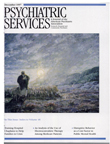The Harvard Medical School Guide to Suicide Assessment and Intervention
Suicide evokes both our personal and our professional concerns. Few of us have not lost a patient, family member, friend, or colleague to this volitional and tragic act. Thankfully, research and scholarship in this area have increased. The Harvard Medical School Guide to Suicide Assessment and Intervention, edited by Dr. Douglas Jacobs, contains a vast amount of information with its 31 chapters and 50 contributors. The book represents a major academic undertaking.
The text is divided into three sections, each containing eight to 13 chapters, that deal with assessment, intervention, and special issues relating to suicide. The authors are expert in the fields they write in and, not surprising given the book's title, they are mostly from Harvard Medical School. Dr. Jacobs has nicely edited the text so that for the most part the reader finds uniformity of prose, clarity of expressed thought, and chapters that logically follow one another. The book, while providing a lot of scientific data, reads very well.
The intervention section is particularly strong. The contributors review the current scientific literature and give practical clinical suggestions about what medications and therapeutic interventions are the most efficacious. Of particular interest is the chapter by Baldessarini and Tondo on the antisuicidal effect of lithium treatment of major mood disorders. Meta-analysis of new data indicates strong support for the antisuicidal effects of lithium, up to a seven-fold decrease. Both Carl Salzman's chapter and Eran Metzger's chapter nicely review electroconvulsive therapy. Response to this modality is more rapid than to antidepressant medication, which can limit the period of vulnerability to suicidal behavior.
In the assessment section, Jan Fawcett's chapter on profiles of completed suicides and Eve Moscicki's contribution on epidemiology of suicide are also exceptional.
Although most of the text is uniform in its scholarship, there are exceptions. One chapter that seems contextually out of place in the book is on self-mutilation. The author admits that rates of major kinds of self-mutilation are "so exceedingly low that most textbooks do not even mention them." However, he then proffers comments that could be construed to mean that certain groups are more prone to these drastic behaviors. One of several such examples is the statement that "some men are so distraught over their homosexual feelings that they cut off their penis, thinking that this will prevent them from indulging in sodomy." Because the author gives no data on incidence or prevalence of self-castration, in either homosexual or heterosexual males, such repetitive kinds of comments become homophobic or meaningless.
Overall, The Harvard Medical School Guide to Suicide Assessment and Intervention is a comprehensive and excellent text, a book one will refer to often. Dr. Jacobs and his contributors have added commendably to the scientific literature.
Dr. Hughes is associate chief of psychiatry at the Boston Veterans Affairs Medical Center and associate professor of psychiatry at Boston University School of Medicine.



